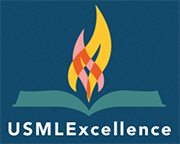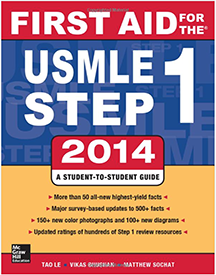There are several resources to consider when preparing for Step 1:
 The SOM has provided the UWorld QBank to students for approximately 8 years, increasing the length of the subscription
from 9 to 12 months in 2013. Based on results of student surveys, those who perform
the strongest on Step 1 have completed the question bank at least twice before taking the exam.
The SOM has provided the UWorld QBank to students for approximately 8 years, increasing the length of the subscription
from 9 to 12 months in 2013. Based on results of student surveys, those who perform
the strongest on Step 1 have completed the question bank at least twice before taking the exam.Scheduling Apps: It is critical that students successfully balance completing the Year 2 curriculum with preparing for USMLE Step 1.
 Scheduling apps are available (e.g., USMLExcellence or Cram Fighter)
Scheduling apps are available (e.g., USMLExcellence or Cram Fighter)that provide guidelines on appropriate numbers of questions to complete during times when classes are in session and then in the 4-6 weeks recommended for focused preparation for the exam.
Practice Exams: Step 1 practice exams can make a big difference in a student’s outcomes. The Comprehensive Basic Science Examination helps prepare students and gives an accurate picture of how ready one is to take the exam.The CBSE is currently offered four times during the MS2 year.
- CBSE0 – Offered in October at the end of the first block of the year. This allows students to complete the exam and gain experience by reading and answering the complex (and sometimes long) questions characteristic of Step 1.
- CBSE1 – Offered in March at the end of the third block of the year. The EPC has determined that a score on the CBSE that corresponds to a passing score on Step 1 (+ the standard error of measurement of the exam) should be sufficient for approval to take Step 1. Currently that score is 70. About 30% of the class has achieved this goal on CBSE1 over the past three years.
- CBSE 2 and 3 – Offered in May and June respectively with the vast majority of students achieving the requisite score on one of these attempts. Over the past several years, greater than 98% of students who achieved the requisite score successfully passed Step 1 at the first attempt.
- Students who fail to achieve the requisite score after CBSE3 receive individualized advising on appropriate methods to proceed, which may include the use of commercial prep courses (such as Doctors in Training) and/or a delay to starting Year 3.
Additional Resources: The school does not currently have specific recommendations for the use of commercial preparatory courses (such as Doctors in Training or Falcon Review) as part of a general approach to Step 1 preparation.
 First Aid, and Pathoma™). In addition, students have used many other resources, including Picmonic and Firecracker to name just two, in preparing for Step 1. The utility of these resources is likely
to depend on personal preferences, and students are advised to carefully screen their
available resources and attempt to keep the number of unique resources to a minimum.
First Aid, and Pathoma™). In addition, students have used many other resources, including Picmonic and Firecracker to name just two, in preparing for Step 1. The utility of these resources is likely
to depend on personal preferences, and students are advised to carefully screen their
available resources and attempt to keep the number of unique resources to a minimum.
